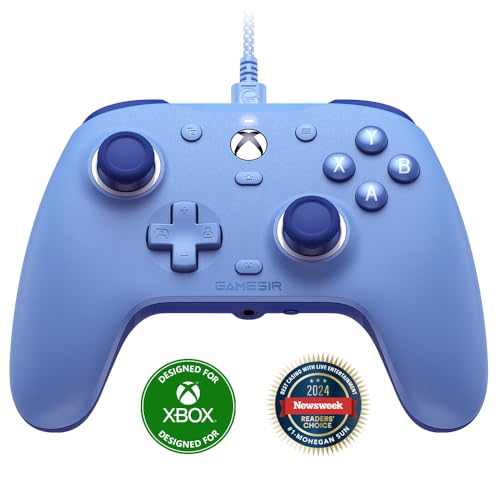Introduction to Wireless Joysticks
Wireless joysticks have revolutionized the way users engage with digital interfaces, particularly in gaming environments. Instead of relying on wired connections that can limit movement and pose potential tripping hazards, modern wireless joysticks offer a level of convenience and freedom that enhances the overall user experience. These devices operate on wireless technologies such as Bluetooth and RF (Radio Frequency), allowing for seamless connectivity without cumbersome cables.
The primary purpose of wireless joysticks is to provide a flexible and intuitive means of controlling games and various applications, ranging from flight simulators to racing games and even some creative software. The demand for more immersive and user-friendly gaming experiences has driven the development of these devices. Furthermore, technological advancements in battery life, signal strength, and latency have significantly improved the reliability of wireless joysticks, making them a viable option for both casual gamers and professionals alike.
The evolution from wired to wireless joysticks marks an important shift within the gaming industry. Initially, traditional wired joysticks were the only option, and although they provided stable connections, the constraints imposed by cables often detracted from the user’s experience. As wireless technology matured, manufacturers began to integrate advanced sensors and communication protocols, allowing wireless joysticks to not only maintain a high level of performance but also to offer ergonomic designs that cater to prolonged usage.
As the popularity of wireless joysticks continues to rise, it is crucial to examine their impact on gaming and other applications. This exploration will help users make informed decisions regarding their preferences and requirements, considering the balance between convenience and potential compromises that may arise from wireless technology.
Advantages of Wireless Joysticks
Wireless joysticks have gained significant popularity among gamers and tech enthusiasts alike due to their numerous advantages over traditional wired options. One of the most prominent benefits is enhanced mobility. Without the constraints of cables, users can experience greater freedom of movement, making long gaming sessions or interactive applications considerably more enjoyable. This level of movement is especially critical in virtual reality scenarios, where users often require an uninhibited range of motion to fully immerse themselves in the experience.
Another notable advantage of wireless joysticks is the elimination of cable clutter that often hampers a gaming setup. A wired joystick can create a chaotic environment, with cables tangling or obstructing movement. In contrast, wireless models help maintain a cleaner and more organized space, which many users find aesthetically pleasing. This reduction of clutter not only improves the visual appeal of a gaming area but also enhances the overall usability of the setup, making it easier to navigate and manage peripherals.
- Versatile Compatibility: Supports Xbox Series X/S, Xbox One X/S consoles, and PC Win10 and above (including the Steam ga…
- Precise Control: Features Hall Joysticks and Hall trigger for comfortable feel, long life, and enhanced gaming accuracy.
- Plug-and-Play Convenience: USB wired connection (detachable) for easy setup and instant gaming without the need for addi…
Moreover, wireless joysticks offer versatility beyond gaming. They can be seamlessly integrated into various multimedia applications, allowing users to control presentations, media players, or even drones, widening their overall utility. This flexibility showcases the adaptability of wireless devices to suit a variety of use cases, catering to both casual users and professionals.
User comfort is also an essential aspect of the wireless joystick experience. Many models are designed with ergonomics in mind, ensuring that users can engage with their devices comfortably over extended periods. With fewer restrictions imposed by cables, users can find a setup that best suits their gaming or multimedia interactions, ultimately contributing to an enhanced overall experience. As technology continues to advance, the advantages of wireless joysticks become increasingly apparent, making them a favored choice among tech-savvy individuals.
Disadvantages and Limitations of Wireless Joysticks
While wireless joysticks offer a range of benefits such as freedom of movement and reduced cable clutter, they also come with several notable disadvantages that can affect gaming performance. One of the primary concerns for users is battery life. Wireless joysticks rely on battery power, which can lead to interruptions during gameplay if the battery runs low or dies unexpectedly. Gamers may find themselves in the middle of a crucial moment when their joystick powers down, necessitating frequent charging or battery replacement, which can disrupt the overall experience.
Another significant issue is latency. Wireless technologies, even with advancements in connectivity, often face inherent delays that can impact responsiveness. For competitive gamers, where split-second reactions are critical, any latency can be detrimental. In contrast to wired controllers, which provide immediate input responses, wireless joysticks may introduce slight delays that could hinder performance in fast-paced gaming scenarios. This potential lag can dissuade serious gamers from adopting wireless variants, particularly in competitive environments.
Moreover, connectivity problems can pose additional challenges for wireless joystick users. Interference from other electronic devices, especially in crowded gaming setups, can lead to signal dropouts or instability. Such disruptions not only detract from the immersive experience but can also lead to frustration. Maintaining a strong and stable connection becomes essential to ensure consistent gameplay, which may not always be achievable with wireless options.
In summary, while the allure of wireless joysticks is evident, the drawbacks related to battery life, latency, and connectivity issues must be carefully considered. These limitations can significantly impact both casual and competitive gamers, making it essential for users to weigh their options when choosing between wireless and wired controllers to find the best fit for their gaming needs.
Conclusion: Balancing Convenience with Compromise
As we explore the landscape of gaming peripherals, particularly the functionality of wireless joysticks, it becomes evident that the debate between convenience and potential trade-offs is not straightforward. While wireless joysticks offer remarkable flexibility and ease of use, they also present certain challenges that can affect user experience. These challenges include issues such as battery life, potential input lag, and connectivity concerns, which are crucial considerations for serious gamers.
On the other hand, wired joysticks provide a reliable connection with consistent performance, which is often essential in competitive gaming scenarios. For those prioritizing performance above all, a wired option may be the preferred choice. However, the tangible benefits of wireless technology, such as freedom of movement and the absence of cable clutter, can be particularly appealing for casual gamers or those who utilize joysticks for applications beyond gaming.
User preferences play a critical role in choosing between these options. It is essential for individuals to evaluate their specific needs and gaming habits. For instance, someone who enjoys the thrill of fighting games on a console may gravitate towards wired joysticks to minimize latency. In contrast, a player who prefers a more laid-back gaming session may opt for the convenience of a wireless joystick that allows movement without restrictions.
Ultimately, the decision to choose between wired and wireless systems should be informed by personal comfort, intended use, and the specific requirements of the gaming environment. By weighing the pros and cons of both options, users can arrive at a choice that aligns with their preferences, ensuring a balanced and enjoyable gaming experience.


